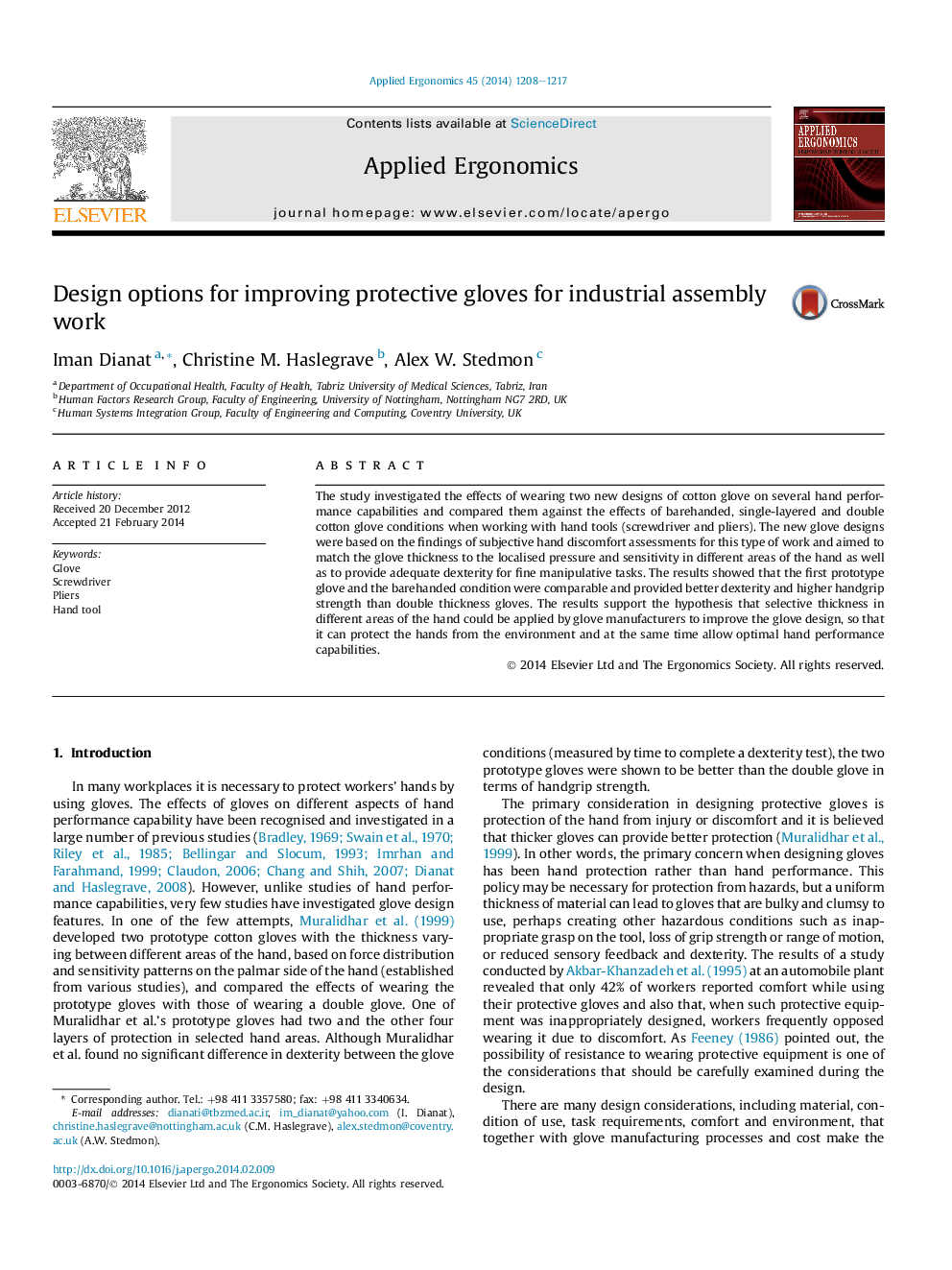| Article ID | Journal | Published Year | Pages | File Type |
|---|---|---|---|---|
| 10365911 | Applied Ergonomics | 2014 | 10 Pages |
Abstract
The study investigated the effects of wearing two new designs of cotton glove on several hand performance capabilities and compared them against the effects of barehanded, single-layered and double cotton glove conditions when working with hand tools (screwdriver and pliers). The new glove designs were based on the findings of subjective hand discomfort assessments for this type of work and aimed to match the glove thickness to the localised pressure and sensitivity in different areas of the hand as well as to provide adequate dexterity for fine manipulative tasks. The results showed that the first prototype glove and the barehanded condition were comparable and provided better dexterity and higher handgrip strength than double thickness gloves. The results support the hypothesis that selective thickness in different areas of the hand could be applied by glove manufacturers to improve the glove design, so that it can protect the hands from the environment and at the same time allow optimal hand performance capabilities.
Keywords
Related Topics
Physical Sciences and Engineering
Computer Science
Human-Computer Interaction
Authors
Iman Dianat, Christine M. Haslegrave, Alex W. Stedmon,
